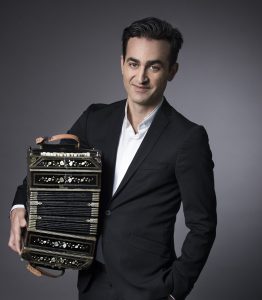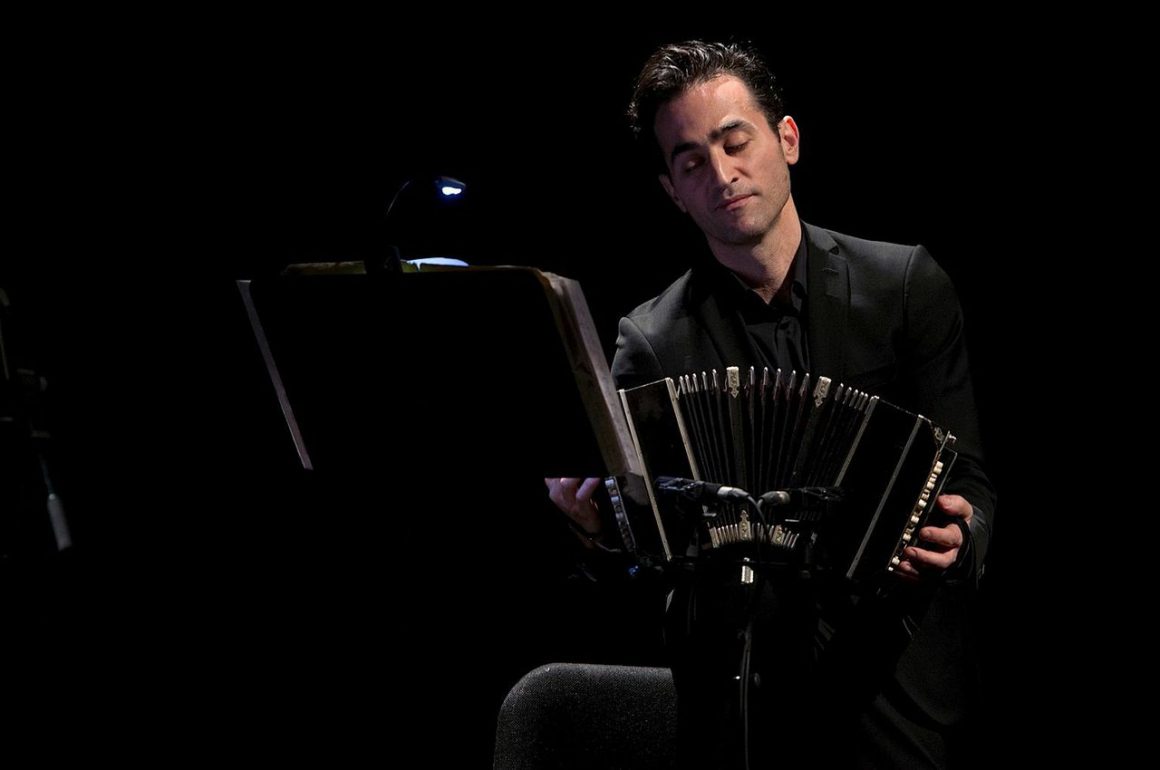Behind the Bandoneon: Jonathan Goldman on the Passion of Misatango
Toronto Mendelssohn Choir’s upcoming concert The Love Affair: Waltz & Tango will showcase the fiery rhythms of tango, brought to life by Martín Palmeri’s Misa a Buenos Aires, also known as Misatango. Performing the bandoneon solo is the award-winning Jonathan Goldman. We had the pleasure of speaking with Jonathan about the bandoneon’s role in Misatango, his journey with the instrument, and performing with TMChoir.
The bandoneon is such a distinctive instrument. Can you tell us more about it?
The bandoneon has a fascinating history. Many people confuse it with the accordion, but it has its own unique story. It was invented in 19th-century Germany for mostly folk music, but it found its true voice in Argentina when European immigrants brought it there around the turn of the century. By the 1920s, the bandoneon had become the emblem of tango music, and it remains the quintessential instrument for tango to this day.
How does the bandoneon contribute to the passion and intensity of Misatango?
Palmeri’s Misatango blends the structure of a traditional mass with the style of tango. The sharp accents, big swelling crescendos, and singing solo lines are written so perfectly for the idioms of the bandoneon and tango. One of my favourite aspects of the piece is how the bandoneon plays in a kind of duet with the soprano soloist. Many of the movements are cast as typical tangos: the second movement, Gloria, for example, is a milonga, a fast-paced tango dance that dancers love dancing to because it has the flashiest moves. The final movement, Agnus Dei, begins with a mournful tone before building to a cathartic resolution. Palmeri beautifully balances the intensity of tango with the reverence of a mass.
Can you describe your journey with the bandoneon and how it has shaped your music career?
I started out on piano like a lot of kids growing up in Canada who get interested in music. The bandoneon came later, when I discovered the music of Astor Piazzolla. There’s a lot in Misatango that pays a kind of implied tribute to Astor Piazzolla, who is the acknowledged master of tango nuevo, or the new, concert-oriented, tango music. I mostly taught myself, but also took lessons in Buenos Aires and Paris.
I started a tango quintet in Montréal called Sweatshop Tango Ensemble and later on went to join Quartango, Canada’s first tango band, where I played from 2007 to 2017. With them, I recorded three albums including the Juno Award-winning album Encuentro and performed with orchestras across Canada. During that time, I relocated to Victoria, BC and started a bandoneon-piano duo with Linda Lee Thomas, who had been the pianist of the Vancouver Symphony Orchestra for decades. As a duo, we performed around the west coast, including remote islands. Since then, I have mostly performed with classical ensembles. Last year, I played Piazzolla’s Tres tangos with Musici de Montréal, which was an unforgettable experience.
How does performing with the Toronto Mendelssohn Choir enhance your experience as a soloist?
I grew up in Toronto and always held the Toronto Mendelssohn Choir and the Toronto Symphony Orchestra in high regard. It’s an honour to perform with TMChoir, and I’m incredibly excited. In general, I love performing with choirs and even more so with a choir of this artistic calibre. I’m especially looking forward to working with Jean-Sébastien Vallée, whom I admire from Montréal’s musical milieu.

The Love Affair: Waltz & Tango takes place on November 3rd, 2024 at Koerner Hall. Don’t miss the chance to experience Jonathan Goldman’s masterful bandoneon performance in Martín Palmeri’s Misatango.


